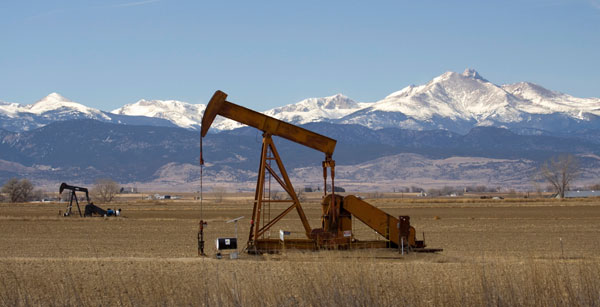New research suggests no significant reduction in total oil and natural gas emissions from 2008 to 2016 in Weld County, Colorado

New research in Elementa suggests no evident reduction in total oil and natural gas emissions and their contribution to the regional air quality from 2008 to 2016 in Weld County, in Northeastern Colorado. Samuel J. Oltmans, a scientist at Global Monitoring Laboratory and Cooperative Institute for Research in Environmental Sciences, is the lead author of this research.
The Weld County region has been in nonattainment for the surface ozone 8-hour National Ambient Air Quality Standard since 2007. From 2008 to mid-2016, oil production increased more than 7 fold and natural gas production more than tripled in the Colorado Denver-Julesburg Basin lying primarily in Weld County.
In 2019, the Environment Protection Agency reclassified the region as a serious ozone nonattainment area for the 2008 National Ambient Air Quality Standard and required new emission mitigation planning to reach attainment.
Global Monitoring Laboratory scientists and others analyzed 9-year data set of the composition of ambient air samples collected daily from the top level of the Boulder Atmospheric Observatory in Erie in southwest Weld County. These measurements documented the atmospheric concentration of various pollutants, including several volatile organic compounds mostly emitted by oil and natural gas sources.

The measurements for acetylene, a marker of combustion emissions such as traffic, did not show long-term changes. Thus, traffic emissions were not significant drivers of air quality change in this region. The measured concentration ratio of i-pentane/n-pentane showed a statistically significant trend indicating a growing influence of the relative contribution of oil and natural gas emissions on the volatile organic compounds composition in the samples at the Boulder Atmospheric Observatory.
The concentrations of methane and oil and natural gas tracer propane remained relatively constant, indicating a possible decrease in relative leakage and/or venting rate by the industry for the average unit of production.
While the most recent State inventory of volatile organic compound emissions projects an oil and natural gas emission reductions of -6.5% per year between 2011 and 2020, the best estimate of the propane emission rate of change (-1.5% per year) inferred from the measurement at the Boulder Atmospheric Observatory during 2008 to 2016 is much smaller.
These results indicate no significant reduction in levels of pollutants from oil and natural gas productions and their contribution to the regional air quality. Apparently, the reductions in emissions per well or drilling site have likely been offset by the overall growth in the number of wells and associated oil and gas operations in the basin.
Atmospheric measurements of volatile organic compounds at the Boulder Atmospheric Observatory provide an alternative method to study oil and natural gas emissions and their contributions to air quality in this region. High-quality and representative atmospheric measurements can provide useful information for policymakers and communities to evaluate the effectiveness of emission mitigation efforts.
NOAA Air Resources Laboratory provided the Hybrid Single-Particle Lagrangian Integrated Trajectory transport and dispersion model used in this publication. NOAA Physical Sciences Laboratory oversaw the operation of the Boulder Atmospheric Observatory and the tower meteorological instrumentation for many years until the tower was dismantled in 2016. The Boulder County Department of Public Health provided part of the funding for the data analysis.
